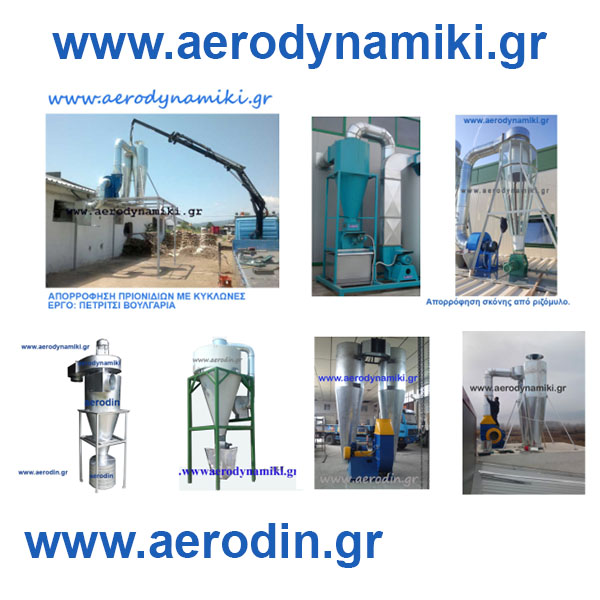- 1 Technical notes
- 2 Industrial Applications
- 3 Silo Cyclones Suctions
- 4 Cyclones for dust and sawdust absorption.
- 5 Filter unit with valves and filt
- 6 Water painting booths filters
- 7 Waterfalls Furniture paint.
- 8 Filters Bag filters
- 9 Absorbent scrubbing benches
- 10 Wood air boilers
- 11 Oil Gas Air Boilers
- 12 Carbon block
- 13 Ιndustrial fans
- 14 Centrifugal fans
- 15 High Pressure Centrifugal Absorbers.
- 16 Centrifugal belt-driven extracto
- 17 Double suction hoods.
- 18 Exhausts in an aerobox
- 19 Explosion-proof absorbers
- 20 ELECTRIC MOTORS MOTOR
- 21 INVERTER 220-380 V
- 22 Fan - blades Hood blades
- 23 Rotary valve - Air barriers
- 24 AXIAL FAN INDUSTRIAL VENTILATORS AXIAL FAN
- 25 Αxial fans
- 26 Hoods Fans Fireplace vents
- 27 Ducts and Accessories
- 28 Flexible spiral airways
- 29 Gas and smoke extraction arms
- 30 Ventilation for car workshops.
- 31 Flexible spiral airways
- 32 Filters and prefilters on a roll
- 33 Air cooler Cooling of outdoor sp
- 34 Axial water heaters
- 35 Air conditioning
- 36 Shop equipments (INOX)
- 37 Louvers ventilation openings
- 38 Grille-damper
- 39 Fans
- 40 Stainless steel fireplace air
Cyclones of various dimensions
Cyclones.
The most common type of dust collector used is the cyclone, where dust and particles along with air enter a cylindrical or conical space tangentially at one or more points and exit through a central opening. It is a construction without moving parts where the gas stream is carried into a confined vortex where centrifugal forces tend to drive the particles to the walls of the cyclone. The particles, due to their inertia, tend to move towards the walls.
The cyclone will be used as the basis for the vortex description. The gas entering the inlet near the top of the cylindrical body creates a vortex or spiral flow between the outlet walls of the gas stream and the cyclone body. This vortex is called the main vortex and coming from a certain point and then, near the base of the cone, it changes direction but maintains its rotational motion. Thus a second vortex is driven up towards the gas outlet.
High efficiency cyclones can act as final separators with up to 90 % retention.
For Buying Advice, Ideas & Product Support contact at +30 2310 781 422
The most common type of dust collector used is the cyclone, where dust and particles along with air enter a cylindrical or conical space tangentially at one or more points and exit through a central opening. It is a construction without moving parts where the gas stream is carried into a confined vortex where centrifugal forces tend to drive the particles to the walls of the cyclone. The particles, due to their inertia, tend to move towards the walls.
The cyclone will be used as the basis for the vortex description. The gas entering the inlet near the top of the cylindrical body creates a vortex or spiral flow between the outlet walls of the gas stream and the cyclone body. This vortex is called the main vortex and coming from a certain point and then, near the base of the cone, it changes direction but maintains its rotational motion. Thus a second vortex is driven up towards the gas outlet.
High efficiency cyclones can act as final separators with up to 90 % retention.
For Buying Advice, Ideas & Product Support contact at +30 2310 781 422

